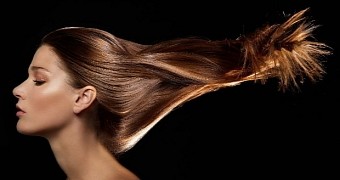University of Southern California researcher Cheng-Ming Chuong and his colleagues believe to have at long last found a cure for male pattern baldness, a condition that affects millions of people around the globe.
Contrary to what some might assume, their proposed cure for alopecia isn't some bizarre pill, ointment or science-made shampoo. It's something way simpler and even sounds counterproductive at first.
Long story short, these scientists argue that, according to their investigations into the matter at hand, one sure way to treat bald spots would be to pluck people's hair, albeit in a controlled and orderly fashion.
This odd cure might really work
Writing in the journal Cell, University of Southern California specialist Cheng-Ming Chuong and fellow researchers detail how, to prove their theory, they plucked 200 hairs off a mouse's back.
Rather than be left with pretty big bald spots, the rodent grew an impressive 1,200 replacement hairs. The scientists say that this happened because the 200 hairs were plucked in a specific configuration.
Thus, the plucking was done in high density, meaning that the researchers removed pretty much all the hair they could find, and over circular areas measuring about 3 to 5 millimeters in diameter (about 0.11 to 0.19 inches).
When the plucking was carried out in low density and over areas with a diameter of over 6 millimeters (approximately 0.23 inches), the mice failed to grow replacement hair and they stayed, well, bald, EurekAlert tells us.
How plucking can make hair grow
The scientists explain that the reason plucking hair can help grow hair is that injuries to follicles alter the environment around them. Injure the right follicles in the right pattern, and new ones will be activated to make up for the loss.
More precisely, it appears that, when injured, follicles send out distress signals calling immune cells to their aid. While on their way to the site of the injury, the immune cells produce proteins that tell nearby follicles that it's time to grow hair.
Although they have until now only experimented on mice, Cheng-Ming Chuong believe that their method of treating baldness by plucking hair could work on people with alopecia as well.
“It is a good example of how basic research can lead to a work with potential translational value. The work leads to potential new targets for treating alopecia, a form of hair loss,” the University of Southern California scientist said.

 14 DAY TRIAL //
14 DAY TRIAL //